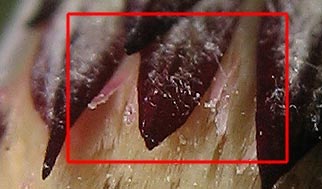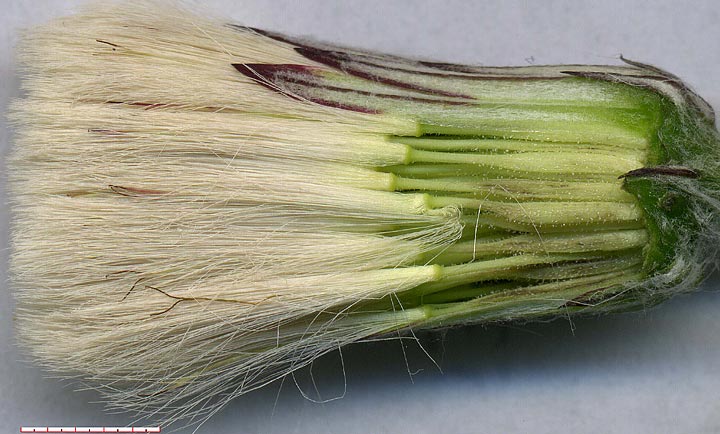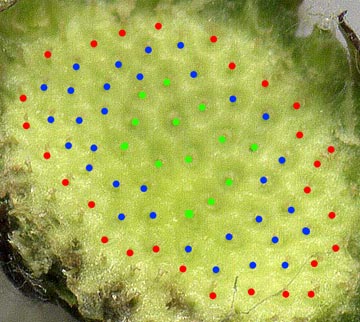


In an attempt to support my hunch that the florets with reduced ligules correspond to those with visible styles immediately adjacent to the phyllaries, phyllaries were removed from a relatively advanced head.

Five florets from the edge were removed. Then each was searched for the corolla and style from within the surrounding pappus, which was essentially the same color. [Note that the darkened styles seen in the above image were not at the very periphery.]








The two other florets were similar to the sheath-ligulate floret 2. Not all florets adjacent to the phyllaries are ligulate (1 of the 5 examined was eligulate). Examination of the receptacle (shown below) showed that the head had 73 florets, 28 at the outer edge (red dots below). Eighty percent of these would mean 22 ligulate florets. The receptacle depressions for 13 central florets were somewhat larger (green dots below); these were assumed to be perfect florets. The following table shows that the results with current assumptions compared well with an earlier floret count with another type II head.

| assumed counts | actual count of second head |
||
|---|---|---|---|
| reduced ligulate, pistillate | 22 | 16 | |
| eligulate, pistillate | 38 | 40 | |
| central perfect | 13 | 12 | |
| total: | 73 | 68 | |